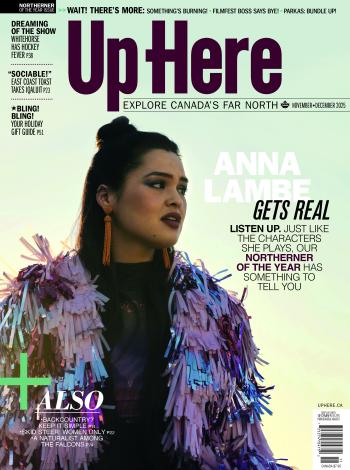Annie Pootoogook’s coloured pencil illustrations of contemporary life in Cape Dorset—domestic routines, the mix of Inuit and settler cultures, the eroticism and violence in relationships—continue to enthral audiences. Most recently, the 2018 Liverpool Biennial featured her art, eliciting praise for her direct style and stirring subject matter. “They’ve never seen anything like it,” says Nancy Campbell, the Canadian author and curator who put together the exhibition. Other reactions from the international audience were less thoughtful and revealed the persistent ignorance of life in the North, she says. “You know, comments like, ‘Oh, they have television up there’ or the fact they use pencil crayons. Do you think they can just go to the corner store and buy oil paints? ‘Oh, they have houses!’ Like, really? Really?”

Campbell curated Pootoogook’s first Canadian solo show in 2006, the same year the Nunavut artist won the prestigious Sobey Art Award. One year after Pootoogook’s death in Ottawa in 2016—her body was found in the Rideau River and the investigation technically remains open—Campbell curated an exhibition for Ontario’s McMichael Canadian Art Collection gallery. This turned into the book Annie Pootoogook: Cutting Ice, a collection of Pootoogook’s work alongside retrospective essays.
Up Here spoke to Campbell about the book and why Pootoogook truly was an artist’s artist.
On Pootoogook’s style and subjects:
“What was so compelling about her work to me as a younger curator, when I first started working with her, was the honesty about the new North. She was putting it out there—the red bras, the nudes. She just drew what was around her life. She had a great sense of composition and colour. She worked very, very hard.
“The beauty of her drawings is that she draws in a style like her mother [Napachie Pootoogook] or grandmother [Pitseolak Ashoona]. It looks like Inuit drawings except the content isn’t what you would expect. That’s the beauty: it’s a hybrid of old and new. Almost every drawing has something of that. It might be an exterior scene with drying hides and a snowmobile. And that’s what it’s like so that’s what she was drawing.”
On Pootoogook’s death:
“When I did the show and the book, I went up to Cape Dorset and talked to her siblings, [former Kinngait studio manager] Jimmy Manning and other elders and asked, ‘What story do you want me to tell?’ Jimmy said he knew she had her demons but he wanted everyone to know she was loved.
“When I did the exhibition, I really tempered it because I wanted to show the really wonderful things about the North. Annie was fairly young and certainly talented and had people who clearly cared about her. When I heard the news I was gutted. I didn’t want to focus on her death [in the book]. The art tells the story of her life. She was a narrator.”
On working with Pootoogook and other Inuit artists:
“I was as naïve as everyone else. To see that kind of representation of the North was surprising. I knew that this work had to be seen. Because I’m a white girl, that can be problematic. I’ve been going [to Cape Dorset] for 15 years and I think I have a fairly comprehensive understanding of what’s going on.
“I never pretend I’m something I’m not. To have criticism you have to have a multiplicity of voices. It’s part of the reason I went back to get my PhD I felt like I needed to have that education on Indigenous pedagogy to understand what I was doing. At the same time, I speak from my heart and support the work. I don’t pretend to be an Inuit art expert. It’s important Inuit artists are included in conversations about contemporary art as opposed to being separated out.”

On the West Baffin Eskimo Co-op and Kinngait studio:
“There’s tons of talent there. They are real trailblazers, starting with Annie’s grandmother and her mother. The women drawers really pushed the boundaries more than the men. There are a few interesting men who draw, but the women pushed it.
“What’s important to remember is that she was working at the co-op in the studio with other people. They’d work and talk to each other. They learned from each other. They learned by example. It’s an apprenticeship system. They copied each other. If something sells, they’ll try it—the owls are selling so I’ll try an owl. With Annie, no one thought they’d buy it. Then she started getting high prices and you saw people trying her style for a while. I don’t know if she thought about technique. She just drew. She thought about getting the best price for her work.”
On Pootoogook’s legacy:
“Contemporary artists love her work. She is an artist’s artist. Inuit art has this thing where it’s seen as just crafty or commercial—which much of it is—but now there’s another level and that’s contemporary art, which is mostly works on paper. It’s a very interesting time.
“She was an important artist for emerging Inuit artists. She opened the door that let other Inuit artists in. Without knowing it, she did that. Her work did that.”
This interview has been edited and condensed for clarity. Campbell’s Annie Pootoogook: Cutting Ice is published by Goose Lane Editions.










